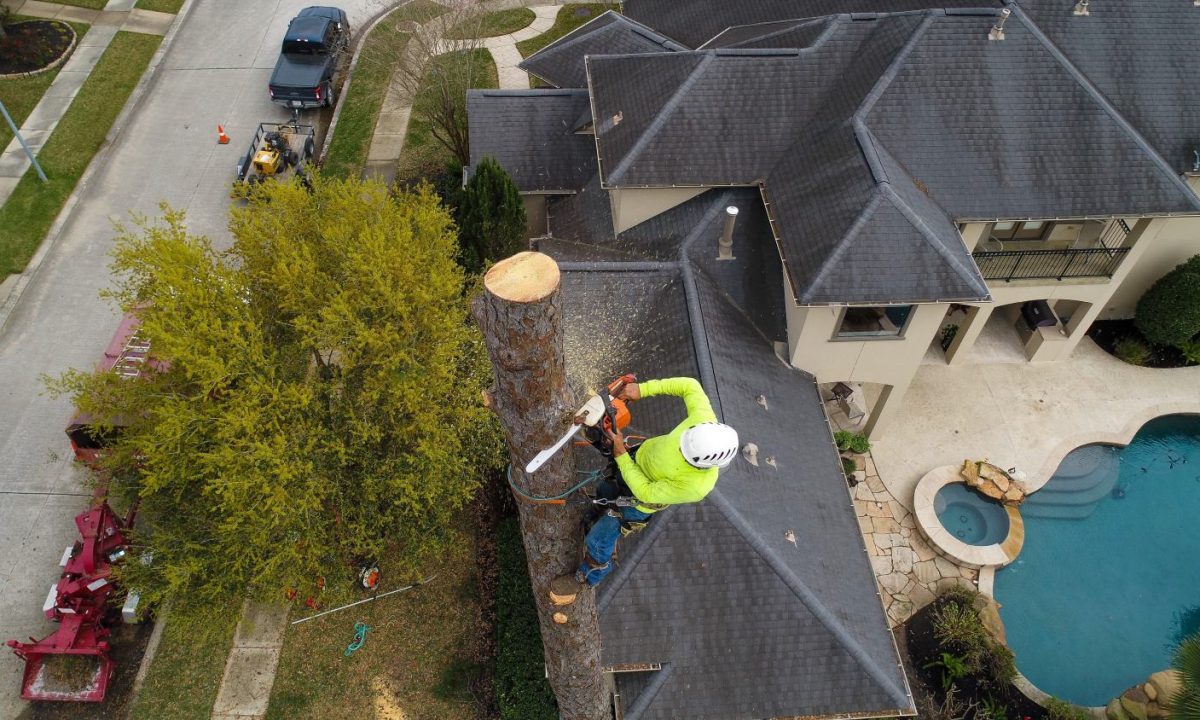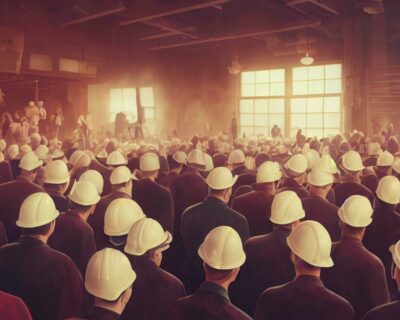
America’s Most Dangerous Jobs
The eight most hazardous industries can teach us a lot about hazardous settings. The US Bureau of Labor 2020 Statistics are the most current North American data set we can take into account in 2022 because 2021 data has yet to be released.
In contrast to other estimates that may be inflated by the frequency of job type, the data is based on the US Bureau of Labor Statistics’ fatal work injury rates per 100,000 full-time equivalent workers. This allows a per capita style measurement and can accurately depict the risks in these industries.
These statistics show that some of the most dangerous and unexpected occupations are the same jobs that have plagued us in the past. We continue to see several catastrophic injuries in these industries. It’s true, the frequency of fatalities has shrunk compared to our history, but it’s far from perfect today as we can see from the following statistics. Sadly, many people are still fatally injured in many occupations, some not even listed in our top 8.
8th Most Dangerous Job in America – Trucker
Even though trucking is the eighth least dangerous career on our list, it still demands discipline, restraint, and competence to perform properly. Due to the unpredictability of our modern highways, even flawless ability can result in calamity.
There were 805 fatalities overall and 25 fatalities per 100,000 truckers in 2020. Professionals in this industry are constantly exposed to fatal wildcards and forced to make split-second decisions. This figure seems tiny when compared to the volume of shipping that passes across our continent daily. But that will never stop us from trying to eliminate these risks entirely.
Popular Safety Measures for Trucking
In addition to requiring training and licensing, many trucking jobs also stress strict drug- and alcohol-free workplace policies. More training beyond the typical licensure need is also becoming more popular. Defensive driving lessons and emergency procedures are among these training programs’ offerings.
7th Most Dangerous Job in America – Ironworking
Our houses, workplaces, and bridges are constructed in no small part by ironworkers. In addition, they construct scaffolding for other people so that their occupations are safer. Better fall arrest PPE and crafty tactics that the ironworkers have made this business safer. Yet things can still go awry. There were 32 fatal accidents per 100,000 workers in this sector in 2020. In comparison to 2019, there are eight more fatalities.
Popular Safety Measures for Ironworkers
For over a century, ironworkers have been honing their craft. Ironworkers in North America have amazing ways to reduce injuries. Before these experts scale the heights, modern building erection typically includes tie-off points engineered into I-beams. We now construct buildings with every step in mind, including the responsibilities the specialist will carry out in each task thanks to the ironworkers’ knowledge and experience. On top of these protocols, more procedures are being taught in the Ironworkers curriculum before they are exposed to risks.
6th Most Dangerous Job in America – Recycling Specialist
Every day, workers who collect trash and recycle put their lives in danger in an effort to make our world cleaner. For every 100,000 workers in 2020, 33 fatalities were reported. Thankfully, these figures are a little lower than 2019’s, which was 35.
Popular Safety Measures for Recycling
There are numerous duties and tasks involved in waste management. It can be challenging to prepare your staff for everything they will face in this field, but businesses are making an effort. To keep their staff informed of all the risks, many waste management organizations are implementing more training and courses. Due to the rapidly evolving technology, this is an endless task.
5th Most Dangerous Job in America – Pilot and Flight Engineer
In comparison to 2019 (61 deaths), the number of deaths among aircraft pilots and flight engineers fell dramatically (34) in 2020. We are aware that there was less air travel as a result of the pandemic, but since the measure is “per 100,000 employees,” the sheer volume of travel shouldn’t have an impact on the figures.

Popular Safety Measures for Air Industry
Some airlines were able to redesign their processes as a result of the pandemic; perhaps this, along with less demanding workloads, led to fewer accidents. Not to mention that the job is less dangerous overall because there are fewer airplanes in the sky.
Obviously, obtaining a pilot’s license requires extensive education, but how that education is combined with real-world experience determines the caliber of the pilots who fly our aircraft today.
4th Most Dangerous Job in America – Construction Specialist
There are plenty of dangerous factors to which construction workers are exposed. The number of deaths per 100,000 people reached 43 in 2020. Sadly, this places it as the 4th riskiest job in the country.
Popular Safety Measures for Construction
Numerous building businesses all over the world are putting various controls into place to control some of the hazards in the modern construction yards. For one, more PPE is now required, yet, raising awareness has yielded the best results. Toolbox talks are a great way to pass on knowledge to younger generations and have been shown to be successful in reducing avoidable incidents.
3rd Most Dangerous Job in America – Roofer
Extreme heat and heights are hazards roofers must contend with daily. Despite a 7-death decrease from 2019 to 2020 (47 deaths per 100,000), roofers continue to experience the third-highest number of tragic accidents.
Popular Safety Measures for Roofing
Roofing is extremely hazardous due to the heat and heights, and the danger increases when complacency is added. Roofing is another sector where toolbox talks and ongoing risk education have reduced incidents. But because specialists need to be aware of their surroundings and exercise caution, numerous safety precautions are put into place simultaneously. These include fall arrest, drug policies, and equipment to lift the shingles and supplies rather than the traditional ladder-reliant methods.
2nd Most Dangerous Job in America – Arborists
Sadly, there were 91 fatalities per 100,000 workers in the logging industry in 2020. 2019 saw a death toll of 68. The risks associated with this job date back to the beginning of time, despite our best efforts to reduce them. However, it continues to rank as the second riskiest job in North America. Despite how much we understand about trees, a variety of variables can quickly alter our predictions.
Popular Safety Measures for Forestry
Due to the heights and need for fall arrest equipment, cutting branches is particularly dangerous and necessitates experience and wisdom. Many businesses use online tests to verify that their employees are knowledgeable about everything that might influence their tasks, including wildlife, weather, and even the different types of trees. However, they seldom stop there, arborists and forestry employees are constantly learning and preparing for worst-case scenarios.
1st Most Dangerous Job in America – Fishing and Hunting Specialist
The most hazardous sector so far identified for 2020 is the fishing and hunting industry. Its powerful forces are still fatally volatile, with 132 fatalities occurring for every 100,000 workers. The weather can quickly change, and the sea and woods can be unpredictable. Fishing can be extremely dangerous because, depending on the weather, it may be impossible to save the crew if a boat capsizes. This makes it necessary for captains and crew to continuously monitor the weather, seas, and horizons. In many circumstances, they are essentially stranded in their predicament and risk becoming lost. It certainly takes courage to go hunting or deep-water fishing.
Fortunately, numbers decreased compared to 2019. And none of these numbers even come close to what they used to be. They’ve decreased substantially thanks to weather prediction, apt captains, and a decrease in predators.

Popular Safety Measures for Fishing and Hunting
Specialists in modern fishing and hunting use a variety of tools, intelligence, and wisdom to do their jobs safely. Professionals are aware that training every member of their team is necessary rather than using a supervisory reactionary strategy. These jobs also require constant learning and refreshers whether through toolbox talks, on-the-job training, or courses.
Accredited Courses for Hazardous Jobs, and Resources
- National Census of Fatal Occupational Injuries In 2020 – PDF
- Defensive Driving for CMV Drivers: Look – Accredited Course
- Walking and Working Surfaces in Construction Environments – Accredited Course
- OSHA 10 Equivalent – Construction – Accredited Course
- Biosafety Hazardous Waste Handling and Disposal (US) – Accredited Course
- OSHA 10 Equivalent – General Industry – Accredited Course
- Logging and Chainsaw Safety – Accredited Course
- Toolbox Talks Work | 6 Tips to Improve Toolbox Talks – Safety Article


























